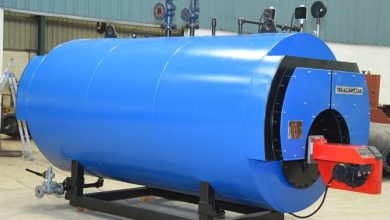Is a High-Energy Pet Right for You? Key Considerations Before Adopting

Adopting a pet is a significant decision that can bring immense joy and companionship into your life. However, it also comes with responsibilities, especially when considering a high-energy pet. These pets, often known for their boundless enthusiasm and constant need for activity, can be wonderful additions to the right home. But how do you determine if a high-energy pet is the right fit for your lifestyle?
This article delves into the critical aspects you should consider before making this decision.
- Understanding High-Energy Pets
High-energy pets are often full of life, always ready to run, play, and explore. Breeds like Border Collies, Jack Russell Terriers, and Australian Shepherds are prime examples. These animals thrive on activity and mental stimulation. While their lively nature can be endearing, it also means they require a significant amount of attention, exercise, and training to keep them happy and healthy.
Before adopting a high-energy pet, it’s essential to understand what this entails. These animals need more than just a walk around the block. They require time, effort, and a lifestyle that can accommodate their active needs.
If you’re someone who enjoys an active lifestyle and has the time to dedicate to your pet, a high-energy breed could be a great match. However, if your schedule is often packed or if you prefer a more relaxed lifestyle, you may want to reconsider.
- Lifestyle Compatibility
One of the most critical factors in determining whether a high-energy pet is right for you is your lifestyle. These pets require a significant amount of exercise. Without it, they can become bored, anxious, or even destructive. Daily activities should include more than just basic walks. They thrive on activities like running, hiking, agility training, or playing fetch for extended periods.
Consider your daily routine. Do you have the time to dedicate to multiple walks, play sessions, and mental stimulation activities each day? Are you willing to invest in training and socialization to ensure your pet remains well-behaved and happy? If your answer is yes, a high-energy pet might be a suitable companion. However, if your schedule is inconsistent, or if you travel frequently, you may find it challenging to meet a high-energy pet’s needs.
- Space and Environment
The environment you live in plays a significant role in whether a high-energy pet will be a good fit. These pets often do best in homes with ample space to roam and play. A fenced yard can be ideal, allowing them to expend energy safely. For those living in apartments or smaller homes, managing a high-energy pet can be more challenging, though not impossible.
It’s crucial to ensure that your living environment can accommodate an active pet. If you live in a smaller space, you’ll need to compensate with frequent trips to parks or other open areas where your pet can run and play.
Additionally, consider the safety of your environment. High-energy pets are often curious and may attempt to escape if not properly secured. Investing in reliable containment solutions, like an Amazon invisible fence, can help keep your pet safe while giving them the freedom to explore within set boundaries.
- Time Commitment
High-energy pets require a substantial time commitment. Their need for regular exercise, playtime, and mental stimulation means you’ll need to be present and engaged with them regularly. This commitment goes beyond physical activity; it also includes training, grooming, and providing companionship.
Training is particularly important for high-energy pets. Their intelligence and eagerness to learn can be a double-edged sword. Without proper training, they may develop unwanted behaviors such as excessive barking, jumping, or chewing. Consistent, positive reinforcement training methods are often most effective with these breeds.
Moreover, grooming may also be more demanding depending on the breed. Regular brushing, bathing, and nail trimming can become part of your routine. The time you spend with your pet should be seen as an opportunity to bond and strengthen your relationship. If you’re someone who enjoys spending time with your pet and can make them a priority, a high-energy breed could be an excellent fit.
- Financial Considerations
Due to their specific needs, caring for a high-energy pet can be more costly than caring for other pets. The expenses go beyond the initial adoption fee. Regular veterinary care, high-quality food, grooming supplies, training classes, and toys are just the beginning. High-energy pets often require more resources to maintain their health and happiness.
For instance, investing in interactive toys and puzzles can help keep them mentally stimulated. Regular check-ups and preventive care are essential to avoid common health issues that active breeds may face, such as joint problems or obesity. Additionally, you might need to invest in secure containment systems, such as Amazon invisible fences, to ensure your pet’s safety while giving them the freedom they crave.
Before adopting, it’s important to assess your budget realistically. Consider both the initial and ongoing costs associated with owning a high-energy pet. Being financially prepared will help you provide the best care for your new companion and avoid any unexpected financial strain.
- Emotional Preparedness
Adopting a high-energy pet is a long-term commitment that requires emotional readiness. These pets will become an integral part of your life, and their needs will often take precedence over other activities. It’s essential to consider whether you’re emotionally prepared to handle the challenges that come with a high-energy pet.
These pets often form strong bonds with their owners and can be quite demanding of your attention. They may not do well if left alone for extended periods, leading to separation anxiety or destructive behavior. Ensuring that you have the emotional capacity to meet their needs is crucial.
Moreover, think about the long-term commitment. High-energy pets can live for 10-15 years or more. During this time, your life circumstances may change, but your pet’s needs will remain consistent. Ensuring you’re ready for this level of commitment is essential for a successful adoption.
- Socialization Needs
High-energy pets often require regular socialization to remain well-adjusted. This includes interactions with other animals, people, and various environments. Proper socialization can help prevent behavioral issues and ensure your pet is comfortable in different situations.
Regular trips to the dog park, playdates with other dogs, and exposure to new experiences are important aspects of socialization. These activities also provide an additional outlet for their energy. However, socialization requires time and patience. You’ll need to be proactive in introducing your pet to new experiences and ensuring these interactions are positive.
If you’re someone who enjoys being out and about and can dedicate time to socializing your pet, a high-energy breed may be a great match. However, if you prefer a quieter, more home-centered lifestyle, you may find the socialization demands of a high-energy pet overwhelming.
- Training and Discipline
Training is crucial for high-energy pets. Their intelligence and energy levels mean they often pick up on things quickly, both good and bad. Without proper training and discipline, they can develop problematic behaviors.
Positive reinforcement techniques are often most effective with these breeds. Consistency is key. Whether it’s basic obedience training, advanced commands, or agility training, these activities help channel their energy productively. Regular training sessions also provide mental stimulation, which is just as important as physical exercise.
For those who enjoy training and working closely with their pets, a high-energy breed can be a rewarding challenge. However, if training isn’t something you’re interested in, or if you lack the patience required, you might find it difficult to manage a high-energy pet
- Health Considerations
High-energy pets are generally healthy, but they require regular veterinary care to stay in top condition. Active breeds can be prone to certain health issues, such as joint problems, obesity, and injuries related to their high activity levels. Regular check-ups, a balanced diet, and appropriate exercise are essential to keeping them healthy.
It’s also important to be aware of the specific health needs of the breed you’re considering. Some high-energy breeds may have genetic predispositions to certain conditions. Being informed and prepared can help you provide the best care for your pet.
Preventative care is key to managing health issues. This includes regular vaccinations, parasite prevention, and dental care. Additionally, keeping your pet at a healthy weight through proper diet and exercise will help prevent obesity and related health problems.
Conclusion
Adopting a high-energy pet can be a fulfilling experience for the right person. These pets bring joy, companionship, and endless energy into your life. However, they also require a significant commitment in terms of time, energy, and resources. Before adopting, it’s essential to consider whether your lifestyle, environment and emotional readiness align with the needs of a high-energy pet.
If you’re an active person who enjoys spending time outdoors, has the time to dedicate to exercise and training, and is ready for the financial and emotional commitment, a high-energy pet could be the perfect addition to your home. However, if you’re unsure about meeting these needs, it may be worth considering a pet with a more moderate energy level.
Remember, the decision to adopt a pet should never be taken lightly. By carefully considering the factors discussed in this article, you can make an informed choice that benefits both you and your potential new companion.





